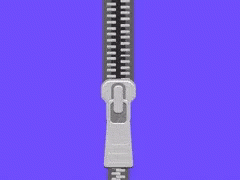
Emergent Literacy Design:
Zipping up our Z
Marion Dukes
Rationale:
This lesson will teach students about /z/, the phoneme represented by Z. They will learn to recognize /z/ in spoken words by learning a sound analogy (the sound of a zipper) and the letter symbol Z, practice finding /z/ in words, and apply phoneme awareness with /z/ in phonetic cue reading by distinguishing rhyming words from beginning letters.
Materials:
Primary paper and pencil; card with "Zack’s zippy zebra zips zippers"; drawing paper and crayons, word cards with ZIG, ZAP, ZIP, ZOOM, ZIT and ZEN; assessment worksheet identifying pictures with /z/, and lastly the book Zack's Zippers.
Procedures:
1. Did you know our written language is like a secret code? Now we have to figure out what the letters represent and when we say them, how are mouth is supposed to move. Right now, we are going to work /z/ and how the mouth moves when we say it. /z/ is spelled with the letter Z. The letter Z looks like a zig-zag and /z/ sounds like a zipper being zipped.
2. Let's pretend to zip up a zipper, /z/, /z/, /z/. [pretends to zip up a jacket zipper] Notice how your top teeth and bottom teeth stay together when we say /z/, we blow air between our teeth with our lips open.
3. Now I am going to show you how to find /z/ in the word muzzle. Super-duper slowly I’m going stretch out the word muzzle listen for the zipper zipping. Mmm-u-u-u-zzle Now I’ll do it slower: Mmm-u-u-u-zz-zz-lll. That’s it! I felt my teeth together and air blowing out through them. There is a zipper /z/ in muzzle.
4. Now let's do something that’s going tickle our tongue! I’m going to tell you a story about my friend Zack and his pet Zebra. Zack’s Zebra had tons of energy and could not pay attention very long. He is always zipping across their yard. His favorite activity is playing with zippers. It is the only thing that holds his attention. He will zip back and forth across the yard to play with all his zippers. Our tongue tickler is ,”Zack’s Zippy Zebra Zips Zippers. Let’s all say it three times all together. Now let’s all say it again, and this time we are going to stretch the /z/ at the beginning of the words. "Zzzzack’s Zzzzippy Zzzzebra Zzzzips Zzzzippers." Let’s do this one more time but this time lets do /z/ and then finish the rest of the word. “/z/ ack’s /z/ ippy /z/ ebra /z/ ips /z/ ippers”
5. [Now the students will take out their primary paper and a pencil to practice writing Z]. We use the letter Z to spell /z/. Capital Z looks like a zigzag. Let's write the lowercase letter z. Start at the fence and make a small flat line on the fence line. It will kind of look like a dash. Then at the end of your “dash” we are going to draw a line slanted down to the sidewalk. Now our point on the sidewalk we just made should be right under where our dash starts on the fence. Next, we are going to put our pencil on our point on the sidewalk and make a dash, just like the on the fence, on the sidewalk. Everyone try to write the letter z 10 times as I come around to see how everyone is doing.
6. Students raising their hands will be called on for their answer and how they knew their answer: Do you hear /z/ in car or zoom? zebra or lion? blues or jazz? Lift or drop? zoo or class? Say: Let's see if you can spot the mouth move /z/ in some words. Zip up your zipper if you hear /z/: Zero, people, zoom, to, the, zoo, for, jazzy, zebras
7. Say: "Let's look at an alphabet book. Dr. Seuss tells us about a funny creature with four feathers growing right out of his head!" Read the page drawing out /z/. Ask children if they can think of other words with /z/. Ask them to make up a silly creature name like Zizzer-Zazzer-Zuzzor. Then have each student write their silly name with invented spelling and draw a picture of their silly creature. Display their work.
8. Show ZAP and model how to decide if it is zap or tap: The Z tells me to zip up my zipper, /z/, so this word is zzzz-ap, zap. You try some: ZOOM: zoom or boom? ZIP: tip or zip? ZIT: zit or kit? ZEN: zen or den? ZIG: zig or pig?
9. For our assessment, students will be working on a worksheet. Students color the pictures that begin with Z and circle them. Students will be called individually during this to read the phonetic cue words.
Resources:
https://www.sparklebox.co.uk/literacy/alphabet/phoneme-collections/z.html
(the worksheet that says circle the images that start with z)
Minden, Cecilia D., et al. Zacks Zippers: the Sound of Z. Childs World, 2011.
Emma Kirkpatrick, "Zack the Zebra Learns to Zip with Z."
https://emk0029.wixsite.com/mysite/emergent-literacy



